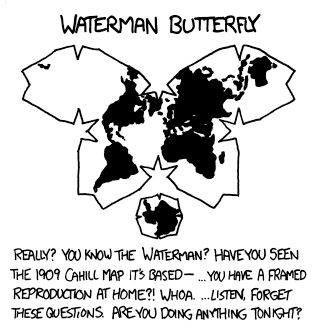Meanwhile, the most recent execution in the US was literally yesterday lmao
This was fun and made me curious about the state of the death penalty here in Sweden, and so I had a look at Wikipedia.
While the last execution was on the 23rd of November 1910, the death penalty itself wasn’t outlawed until 1975, Wikipedia quoting the phrase “death penalties may not occur.” It also goes on to explain that before cell prisons and the penal law from 1864 was put into action, taking someone’s freedom was relatively uncommon and even for minor crimes your options were usually fines or execution. Yikes.
It lists examples of some crimes that’d get you the death penalty, some of which are terms I’ve not heard before.
- Hädelse (blasphemy)
- Tidelag (bestiality)
- Trolldom (witchcraft)
- Blodskam, lit. ‘blood shame’ (incest)
- Tvegifte, two-marriage (bigamy)
The last death by hanging happened in Scania 1836, a farmhand was executed for robbery-murder.
The last public execution was the 18th of May 1876, where two people were executed Gustav Hjert outside of Malmköping in Södermanland, and his accomplice, Konrad Tector outside of Visby, Gotland. They were both serial criminals; forgery, arson, robbery, theft, murder. They were both decapitated. The year after in 1877 a law was put in place so that executions could no longer be performed in public.
I’m a bit blown away that an execution happened in Malmköping. Some years back I rented a furniture storage there. It’s a tiny place, somewhere between a very small town and a village.
The last woman to be executed, Anna Månsdotter, was executed in 1890, convicted for having murdered her step daughter. Her son was also convicted for the same crime, but he was granted a lifetime sentence for penal work instead. It highlights that it was the first execution carried out by Anders Gustaf Dahlman, who also carried out the very last execution in Sweden to date.
So the last execution to date was in late 1910, was carried out by Anders using a guillotine (after King Oscar II in 1906 proclaimed that future executions will only be carried out mechanically). Alfred Ander, the victim was sentenced to death for a murder-robbery of a woman. He’d previously had a few stints in prison for “various minor crimes.” His wife attested that he was an abusive alcoholic, and that she’d previously feared that he’d end up killing her.
Now, there were people sentenced to death after 1910, but they were never executed.
Hilda Nilsson the “angel maker” was sentenced to death in 1917, for having murdered seven children, and man-slaughtered(?) one. An “angel maker” is someone who assumes care for foster children, and then don’t. She hung herself a shortly after being convicted.
The last man to be sentenced to death was Mohammed Beck Hadjetlaché who Wikipedia says was born either in 1868 or 1872 (he apparently provided two different birth years) in Constantinople. He was responsible for the deaths of three Russian citizens, with another four suspected and unaccounted for. His execution turned into a lifetime prison sentence. While in prison he wrote a book where he defended his crimes, and he later died in prison in 1929.
Honestly, skimming through all of these people’s articles there’s so much you could learn. Hadjetlaché was anti-communist, and operated some kind of facility for anti-Bolchevik people seeking refuge from Russia. He also operated some kind of magazine?
There’s notes about the last two publicly executed people having had their bodies taken away for experimentation.
There’s also a bunch about executions prior to the 1700s, including an infuriatingly short sentence just saying “Even children could be executed, for example a 12-year old in Kävlinge during the 1300s.” with no further links or information on the matter.
Belarus still stuck in the 20th century…
Tuscany (today a region of the Italian Republic) was the first (then) country in the wold to abolish death penalty in 1786.
So what were the beheadings that weren’t guillotine? Did they still have a guy in a black hood chop off heads with a huge axe?
In Norway it looks like its an axe. However the graphic isn’t 100% because Norway did carry out some executions in the 40s by shooting. Course they were Nazis so do they even count?
kinda wish the color was by year instead of method.
Due to the methods and years being roughly correlated the colour scheme makes it look like the map is saying that more recent is better
This lad was executed by the ‘garrote’ because of killing a policemanin 1974. For some reason a military crime under Franco’s regime: https://en.wikipedia.org/wiki/Salvador_Puig_Antich
The “policeman” was a member of the guardia civil, a paramilitary police (gendarmerie) and today still under a hybrid control by the ministries of interior and defence.
Ta! That explains it. Gruesome way to execute someone
In Russia they just get pushed out of windows these days.
I recently learned that there is a word for that: “defenestration”
Wow, Portugal way ahead of the curve. Iceland too, but that might be a size thing.
Did Germany ever do guillotining on it’s own, or was it just in the French occupation zone?
Yeah, the Nazis used the guillotine pretty extensively outside of the death camps
TIL. In the movies they just pull out their Luger.
We Dutch really miss the barbeques after a “gezellige” execution.
Also we executed fascist leader Anton Mussert in 1946, so the map is wrong
I think I’d rather be guillotined than shit or hanged.
Can one of y’all let the state know.
getting shit on is gross, but you get to live
I said what I said.
That depends on many variables
The state shouldn’t have the legal ability to regularly kill people as part of the justice process.
Latest in Russia was like yesterday
Yep, with Russia the interpretation of “execution” is taken very… liberally.
No roasted liver?











